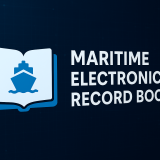By Libby George (Reuters) Helicopters hover above a patrol vessel in Nigeria’s frenetic Apapa port as attack boats zoom past. On the dock, drones emblazoned with the Nigerian flag sit ready to deploy – all part of a $195 million U.S.-backed “Deep Blue” initiative to deter pirate attacks in the world’s most dangerous area for seafarers.
The more than 2.35 million square kilometer (910,000 million square mile) expanse of the Atlantic Ocean that borders some 20 West African nations is known as “pirate alley,” where nearly all the world’s kidnappings at sea now take place since the water off Somalia in East Africa has become more secure.
Bashir Jamoh, head of the Nigerian Maritime Administration and Safety Agency (NIMASA), said “Deep Blue” had stemmed recorded kidnappings in the second quarter, after a record 130 sailors last year, compared with five in the rest of the world.
But there have already been 50 kidnappings logged this year and the U.S. navy is helping with training and European navies are assisting in patrols, a mark of their concern for a region that is a key global supplier of crude oil.
“If the threat to their ships is not addressed, the entire international trade is affected,” Jamoh said.
Unlike in Somalia, which had no navy and limited government capability and thus allowed foreign navies to fire on ships and arrest pirates, only Nigerian security forces are allowed to be armed in the country’s large territorial waters.
“Nigeria is going to take the lead,” Jamoh said.
Lurking beneath the government’s new show of maritime strength is poverty in the Niger Delta, where nearly all West Africa’s pirates originate.
Pollution in the region where international and local firms churn out Nigeria’s oil means people cannot farm or fish and 70% of its roughly 30 million people earn less than $1 per day, according to the United Nations, making piracy attractive.
The U.N. Officer on Drugs and Crime (UNDOC) said collusion between some members of the security forces and pirates as well as scant prosecutions for kidnappings must also be tackled.
“The issues that caused this in the Niger Delta have not been addressed,” said Max Williams, chief operating officer at security firm Africa Risk Compliance. “They still have the weapons, they have the boats, they have the fuel to kidnap people from these vessels.”
The Nigerian navy said this year it would strengthen measures to root out and punish security personnel who collude with kidnappers and criminals.
PIRACY COSTS BILLIONS
Piracy is nothing new to Nigeria, but the number and range of kidnappings has shot up, with oil tankers, container ships and fishing boats at risk even 210 nautical miles offshore.
Kidnappings for ransom accounted for only 15% of attacks in 2009, according to UNDOC; by 2020, these made up nearly all attacks as ransoms became more lucrative than any cargo.
The cost of freeing a group of hostages roughly doubled to up to $300,000 from 2016 to 2020, according to UNDOC, which estimated that Niger Delta-based pirates netted $4 million in ransom payments last year.
The sum pales compared with Somali pirates’ more than 1,000 captives in 2010, but Nigeria’s vice president put the economic cost in the billions, stifling much-needed development in a region disproportionately dependent on seaborne imports.
Jakob P. Larsen, head of maritime and cybersecurity at shipowner association BIMCO, said many ship owners simply refuse to ply the waters, pushing up costs, while crew also refuse to sail in the region – and can demand double pay if they do.
Pirates typically take kidnapped sailors to the Delta’s swampy, snaking creeks, where they face malaria, typhoid and attacks from rival bands of kidnappers. Nationwide, kidnappings have spiked over the past year as the economy faltered.
In January, a seafarer from Azerbaijan died during a kidnapping, and two others of unspecified nationality died of sickness during abduction in 2020.
The Danish, Italian and Portuguese navies are also sending assistance and early this month, a hulking U.S. expeditionary base – the USS Hershel “Woody” Williams – docked to help train regional security to use the new kit.
Commanding Officer Captain Chad Graham, asked about the underlying issues, told Reuters piracy was a “shore-based problem” but he and U.S. Consul General Claire Pierangelo both said they were hopeful kidnappings would fall as the economy recovered from last year’s coronavirus body blow.
Some pirate kingpins are well connected and have serious regional clout, UNDOC found.
The navy also offers shippers, who are not allowed private armed security, navy escorts, and extra protective services, an economic link Larsen said was unfortunate. “It introduces a conflict of interest because there is a money stream,” he said.
NIMASA and the navy did not respond to requests for comment.
Insurance companies, led by underwriters Lloyd’s Market Association (LMA), expanded the size of the area in the Gulf of Guinea included in the highest-level risk last year.
Neil Roberts, LMA’s head of marine and aviation, said despite Deep Blue, they were unlikely to change their assessment. He cited social unrest in the Niger Delta and the “distressed fabric of the Nigerian economy.”
“As long as that’s there, the extra risk will remain,” he said.
(Additional reporting by Angela Ukomadu in Lagos and Camillus Eboh in Abuja; editing by Philippa Fletcher, Reuters)
SOURCE READ THE FULL ARTICLE
Will Drones And Warships Be Enough To Tackle The World’s Latest Piracy Hotspot?










